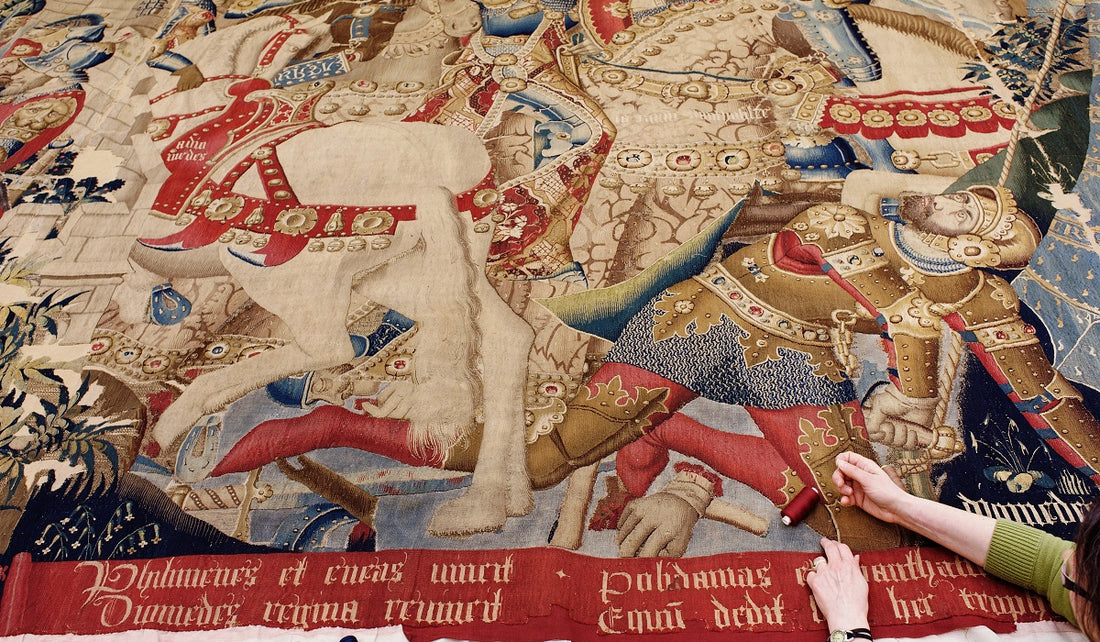
Inside Textile Conservation

Image credit: V&A.
Catherine Harris, one of our team members, is studying Textile Conservation, alongside her work with Selvedge. She puts together our series of workshops and socials and helps organise our newly launched textile tours. Here, Catherine gives us an insight into the work of a textile conservator.
Of all the professions working with textiles, textile conservation is unique. It requires a great breadth of skill, from manual dexterity, academic and scientific knowledge, cultural awareness to aesthetic sensitivity. Textile conservation not only conserves physical objects but the histories, memories and the social context in which an object was made, worn and survived. Textile conservators work directly with objects of cultural value with a responsibility to retain their material and cultural significance. Usually working within a collection cares team, textile conservators remain important cultural custodians.

Image credit: The Textile Conservation Foundation.
There are very few degree courses in conservation the UK as well as around the world. Textile conservation, as a specialism within the conservation profession, is even more rare. The Textile Conservation Centre (TCC) moved to Glasgow in 2010, having previously been part of the University of Southampton, and remains the only course that specialises in textile conservation in the world.

Detail from the Gideon tapestries, image credit: The National Trust’s Textile Conservation Studio.
Textile conservators are usually not visible within the museum space, often hidden, their studios are carefully protected spaces, looked after with great care to ensure the environment is suitable to protect fragile objects from further degradation. More recently conservation has put greater emphasis on preventive conservation rather than interventive, meaning the careful control of a textiles environmental conditions to prolong a textiles life. Preventive conservation doesn’t interfere with the layers of history, previous repair works and any staining or soiling that may have historical importance.
For example, the Reigate Doublet was found concealed above a fireplace behind the main beam, hidden within the wall. After further research it was discovered it was a working-class item of clothing, of which very few examples have survived. Consequently, it was decided the doublet should be preserved exactly as it was found and a restored version of the original be made to show its original style.
To read more about being a textile conservator, visit the Textile Conservation Centre’s blog.
To find out more about the MPhil Textile Conservation Course, visit www.gla.ac.uk

